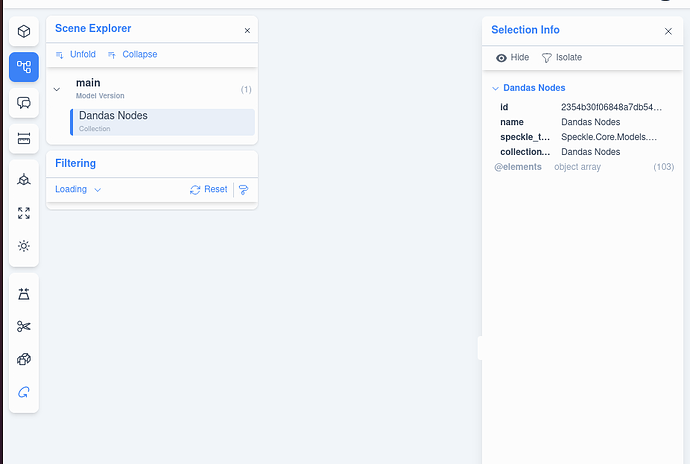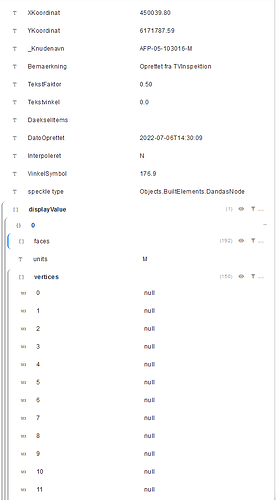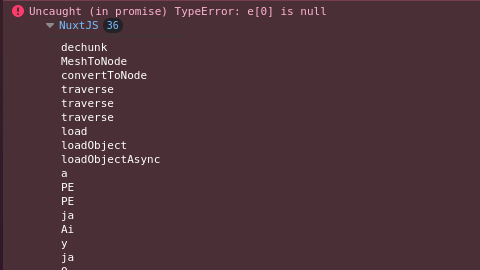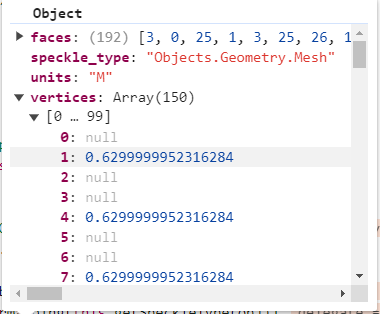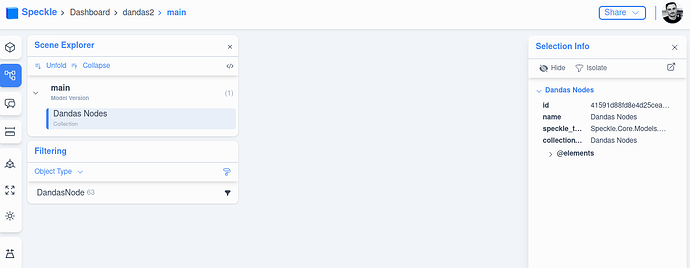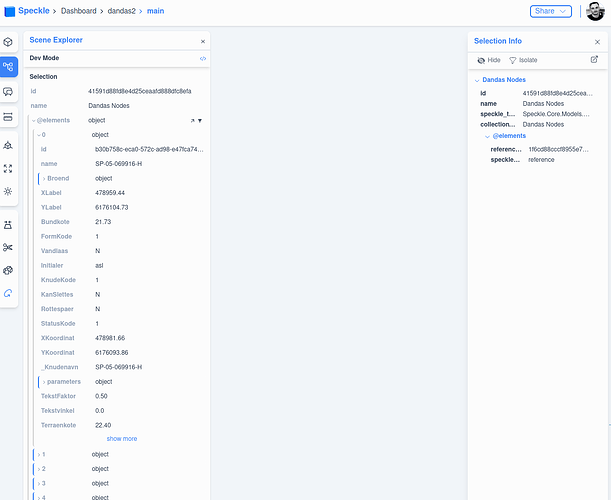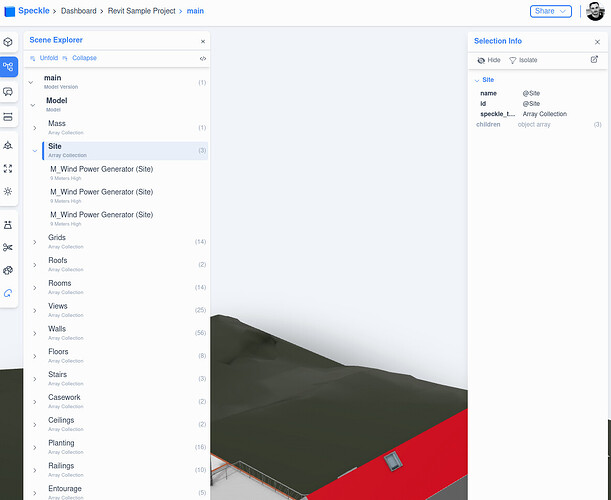Actually, I think I got the detach part sorted.
Add this to the PreserializeObject:
if (detachable) {
const serialized = await this.SerializeBaseWithClosures(object, [...closures])
return new ObjectReference(serialized.id)
}
And updated PreserializeEachObjectProperty with
for (const key of objectKeys) {
const detachable = key.startsWith('@')
converted.set(
BaseObjectSerializer.CleanKey(key),
await this.PreserializeObject(o[key as keyof object], closures, detachable),
)
}
Full code below
import { enc, MD5 } from 'crypto-js'
import { IBase, ITransport } from './interfaces.ts'
/**
* Serializer for Speckle objects written in Typescript
*/
export class BaseObjectSerializer {
constructor(public transports: ITransport[]) {}
public async SerializeBase(object: object): Promise<SerializedBase> {
return await this.SerializeBaseWithClosures(object, [])
}
private async SerializeBaseWithClosures(object: object, closures: Array<Map<string, number>>) {
const thisClosure = new Map<string, number>()
closures.push(thisClosure)
const converted = await this.PreserializeEachObjectProperty(object, closures)
let json = this.SerializeMap(converted)
const id = this.GetId(json)
converted.set('id', id)
this.AddSelfToParentClosures(id, closures)
if (thisClosure.size > 0) {
converted.set('__closure', Object.fromEntries(thisClosure))
}
converted.set('totalChildrenCount', thisClosure.size)
json = this.SerializeMap(converted)
await this.StoreObject(converted)
return new SerializedBase(id, json)
}
private async PreserializeObject(
object: unknown,
closures: Array<Map<string, number>>,
detachable: boolean = false,
): Promise<unknown> {
if (!(object instanceof Object) || object instanceof String) {
return object
}
if (detachable) {
const serialized = await this.SerializeBaseWithClosures(object, [...closures])
return new ObjectReference(serialized.id)
}
if (object instanceof DataChunk) {
const serialized = await this.SerializeBaseWithClosures(object, [...closures])
return new ObjectReference(serialized.id)
}
if (object instanceof Array) {
// chunk array into 5000 by default
const chunkSize = 5000
if (object.length > chunkSize) {
let serializedCount = 0
const data = new Array<DataChunk>()
while (serializedCount < object.length) {
const dataChunkCount = Math.min(chunkSize, object.length - serializedCount)
data.push(new DataChunk(object.slice(serializedCount, serializedCount + dataChunkCount)))
serializedCount += dataChunkCount
}
return await this.PreserializeObject(data, closures)
}
const convertedList = new Array<unknown>()
for (const element of object) {
convertedList.push(await this.PreserializeObject(element, closures))
}
return convertedList
}
if (object instanceof Object) {
return Object.fromEntries(await this.PreserializeEachObjectProperty(object, closures))
}
throw new Error(`Cannot serialize object ${object}`)
}
private async PreserializeEachObjectProperty(
o: object,
closures: Array<Map<string, number>>,
): Promise<Map<string, unknown>> {
const converted = new Map<string, unknown>()
const getters = Object.entries(Object.getOwnPropertyDescriptors(Reflect.getPrototypeOf(o)))
.filter(([key, descriptor]) => typeof descriptor.get === 'function' && key !== '__proto__')
.map(([key]) => key)
const objectKeys = new Array<string>()
objectKeys.push(...Object.keys(o))
objectKeys.push(...getters)
for (const key of objectKeys) {
const detachable = key.startsWith('@')
converted.set(
BaseObjectSerializer.CleanKey(key),
await this.PreserializeObject(o[key as keyof object], closures, detachable),
)
}
return converted
}
private static disallowedCharacters: string[] = ['.', '/']
private static CleanKey(originalKey: string): string {
const newStringChars = []
for (let i = 0; i < originalKey.length; i++) {
if (i == 1 && originalKey[i] == '@' && originalKey[0] == '@') {
continue
}
if (this.disallowedCharacters.includes(originalKey[i])) {
continue
}
newStringChars.push(originalKey[i])
}
return newStringChars.join('')
}
private async StoreObject(object: Map<string, unknown>) {
for (const transport of this.transports) {
await transport.SaveObject(object)
}
}
private SerializeMap(map: Map<string, unknown>): string {
return JSON.stringify(Object.fromEntries(map))
}
private GetId(json: string): string {
return MD5(json).toString(enc.Hex)
}
private AddSelfToParentClosures(objectId: string, closureTables: Array<Map<string, number>>) {
// only go to closureTable length - 1 because the last closure table belongs to the object with the
// provided id
const parentClosureTablesCount = closureTables.length - 1
for (let parentLevel = 0; parentLevel < parentClosureTablesCount; parentLevel++) {
const childDepth = parentClosureTablesCount - parentLevel
closureTables[parentLevel].set(objectId, childDepth)
}
}
}
export class DataChunk implements IBase {
public speckle_type = 'Speckle.Core.Models.DataChunk'
public data: unknown[]
constructor(data: unknown[] | null) {
this.data = data ?? []
}
}
export class ObjectReference implements IBase {
public speckle_type = 'reference'
constructor(public referencedId: string) {}
}
export class SerializedBase {
constructor(
public id: string,
public json: string,
) {}
}
![]()
![]()
